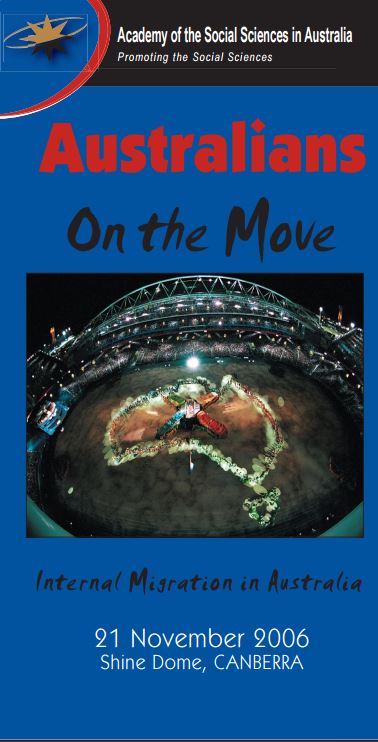Category
2006Internal migration in Australia
Debate on Australia’s future population usually focuses upon issues at the national level such as the nature and levels of international migration and the declining birth rate. Periodic Australian Government reports such as the Treasury’s Intergenerational Report also focus only upon the national level. These national level considerations are important but most economic, social and environmental planning requires population information at the local or regional level. For example, if Australia’s population were to grow by 10 million people in the next forty years, the most vital information that would be needed for planning purposes is where those additional people would be living. This is the information that is required for policies related to energy supply, housing, employment, industry location, education and health services, family and community services, environmental planning, leisure and recreation, the arts, indeed almost every planning purpose that we can imagine.
Internal migration is the principal way in which local and regional populations change in Australia, yet much less attention has been given to measuring movements within the country and to understanding the causes and the dynamics of these movements. This has been recognised by the Academy of the Social Sciences in Australia and by the Australian Research Council through their support of a major research project entitled Australians on the Move. During 2006, this project has brought together the leading specialists in this field from across Australia to apply the latest available information to address a wide range of issues related to population mobility. The consolidated results of this research will be presented for the first time at the Academy’s 2006 Symposium.
The symposium addresses such important issues as the continued growth of Australia’s largest cities, the depopulation of inland Australia, the rapid growth of coastal settlements, the movements of Indigenous people, the movements of the young and the old, of women and men, of international immigrants to Australia. New forms of movement are discussed as well as the implications of population mobility for labour supply, housing, social development and the environment.
The symposium will provide important information for all those engaged directly in planning at the local and regional level and, more generally, for those interested in the changing nature of Australian society.
